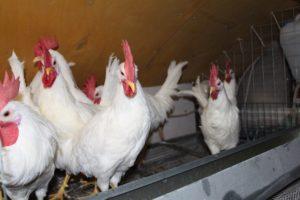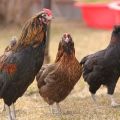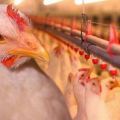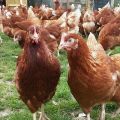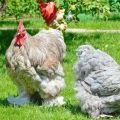Description and characteristics of Iza Hubbard broilers, breeding rules
Isa Hubbard broilers are considered a popular bird species that many farmers raise. To succeed in this, it is worth following the basic recommendations. For this, it is important to organize the correct feeding of chickens and adult birds. Compliance with the requirements for the poultry house and the prevention of dangerous diseases are also important. For birds to develop normally, a suitable temperature regime is required.
Broiler description and characteristics
The Isa Hubbard F15 breed is distinguished by certain features. You should definitely familiarize yourself with them before starting bird breeding.
Exterior cross
For chickens Isa Hubbard F15, the following features are characteristic:
- wide back;
- dense skeleton;
- small head;
- yellow skin color;
- small straight comb;
- elongated keel;
- tight legs;
- red and pink earrings;
- white feathers;
- low landing;
- small wings.
In the process of development, feathers in chickens grow much earlier than in cockerels. Up to 2 months, males weigh 3 kilograms, while females weigh 300 grams less. The breed was bred to obtain meat.
As a result of the selection of chickens, it was possible to get rid of the dwarf gene. Due to this, their weight can reach 8-10 kilograms. However, most often they are fed only up to 5 kilograms.

Bird productivity
The breed is characterized by excellent productivity. Most often, birds are bred for meat. Adult birds are capable of reaching 8-10 kilograms. However, they produce up to 200 eggs per year. Their weight is 60-70 grams.
Character of chickens
These birds are characterized by a calm nature. They quickly adapt to a new place and easily get along with the rest of the inhabitants of the chicken coop.

Advantages and disadvantages of the breed
The advantages of the breed include the following:
- meat and egg direction;
- uniform development of the livestock;
- early maturity with a small amount of feed;
- almost 100% chick survival.
The disadvantages include high sensitivity to heat. The temperature in the room in which the chickens are kept should be at least 30 degrees.
Humidity parameters cannot exceed 70%.
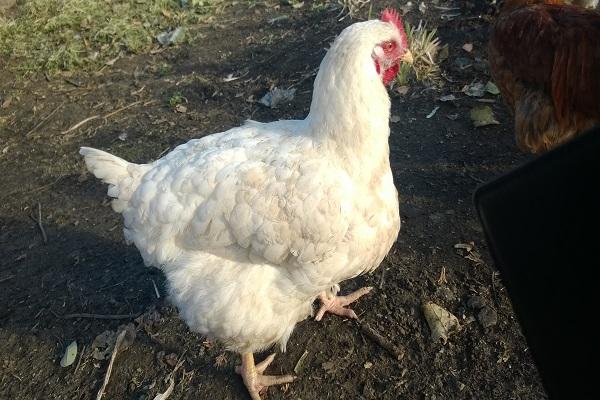
Subtleties of content
To raise a healthy herd, there are a number of important conditions to follow.
House requirements
3 days before placing the birds in the chicken coop, the room is treated with formalin. The floor should be covered with lime and sawdust. Before placing broilers in the house, they should provide a temperature of +32 degrees.Humidity should be 70%. Then, every 5 days, the temperature is reduced by 2 degrees.
It should be borne in mind that the temperature should not be less than +18 degrees. Sharp fluctuations in indicators negatively affect the development of birds.
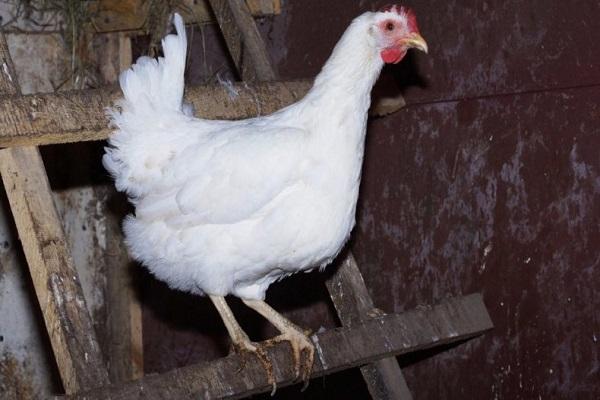
Walking yard, feeders and drinking bowls
The courtyard should be in a sunny place. This helps to avoid active proliferation of bacteria. Protection of the walking yard from rodents is also important.
It should be borne in mind that broilers do not require a lot of walking space. They move quite a bit, which allows them to gain weight. There should be clean water in the bird drinkers at all times. Access to feeding troughs is also important.

Feeding rules
To be successful in raising broilers, they need to provide a balanced diet.
Chicks
Within 4 days, the chickens are given prelaunch feed. It includes 50% corn, 14% meal, 16% wheat, 12% milk powder. On day 5-30, add the rest of the products. Chickens need sand for proper digestion. They also need crushed shells.
To avoid disturbances in the functioning of the digestive system, it is worth following these recommendations:
- Pour a weak potassium permanganate solution for 30 minutes twice a day. This is done in the morning. After the specified period, it is changed to clean water.
- Put small stones in the feed. Their diameter should be 2-4 millimeters.
- From the age of 5 days, add vitamins A, E, D to the diet. At the same time, you should strictly adhere to the dosage.
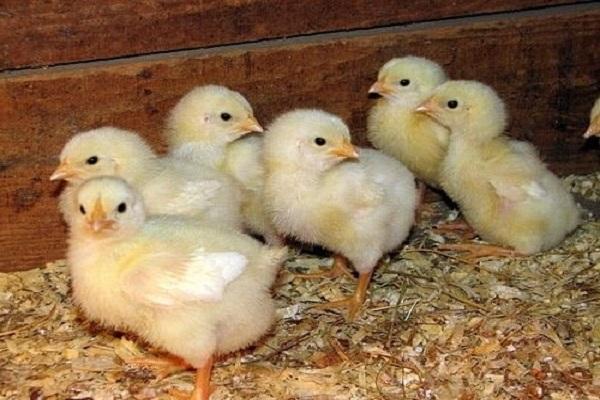
Adult bird
At 1-3 months, nutrition remains unchanged. At the same time, the amount of food consumed is increased. During this period, broilers eat finishing feed. It contains the following ingredients:
- 45% corn;
- 21% chopped wheat and barley;
- 17% cake;
- 3% meat and bone meal;
- 5% yeast;
- 4% fishmeal;
- 1% herbal flour;
- 2% fat and chalk.
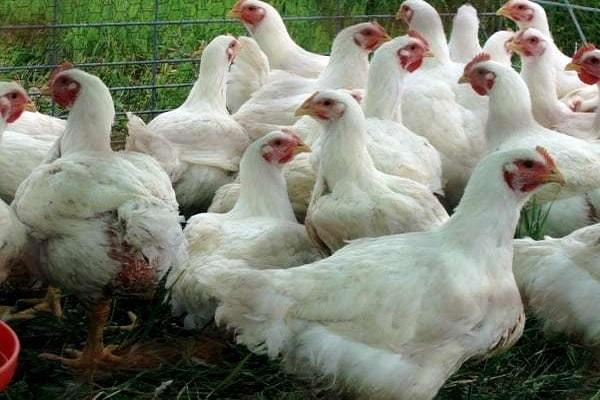
Breeding specifics
Breeding chickens of this breed requires the formation of a parent flock. On the first day after the acquisition of young animals, it is worth picking up the strongest and healthiest chicks. After that, it is important to control their weight gain. This is done at 2 weeks and at 1 month.
1 rooster will be enough for 5-6 females. It is recommended to keep the herd in a separate enclosure. It should be fenced off from other birds. It is important that the diet of hens and males is as balanced as possible.
For chickens of this breed, a weakly expressed maternal instinct is characteristic. Therefore, eggs are recommended to be kept in an incubator or placed under females of other breeds. The survival rate of chicks is at a high level and amounts to 96-98%.
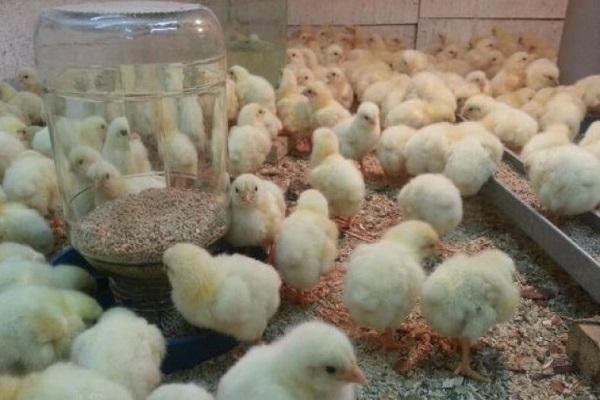
Immediately after hatching, the birds are placed in a brooder. The temperature should be +32 degrees, and the humidity should be 70%. With an interval of 5 days, the temperature should be reduced by 2 degrees. It should be borne in mind that broilers are characterized by sensitivity to its changes.
In the first 5 days, birds need round-the-clock lighting. Subsequently, it is gradually reduced - by 1 hour a day.
There can be no more than 15 chickens per square meter. To ensure their normal development, it is worth keeping the room clean. It is recommended to remove the bedding 1-2 times a day. The poultry house needs to be systematically ventilated. It is permissible to treat it with ultraviolet light several times a day.
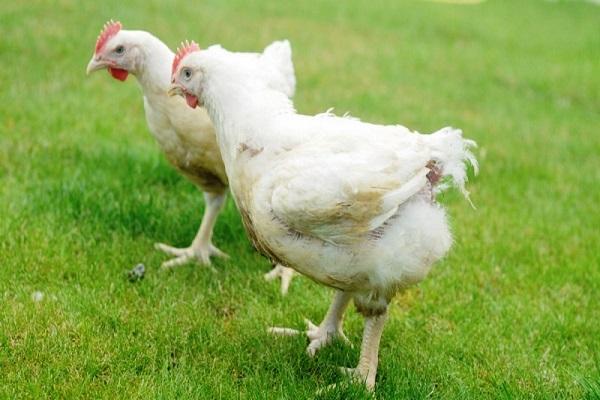
Diseases and prevention from them
Chickens of this breed are resistant to most diseases that are characteristic of birds. This is usually observed with proper care and a balanced diet.
If these conditions are violated, there is a risk of unwanted symptoms. With the development of viral infections, birds begin to wheeze. If there is a deficiency of vitamins, they fall to their feet. With the development of coccidiosis, there is a risk of diarrhea.
Therefore, broilers should be away from sources of infection. They should be isolated from the main chicken herd.It is also important for birds to provide protection from rodents and wild birds. When any signs of disease appear, the birds are moved to another cage.

To avoid the development of serious pathologies, it is worth vaccinating birds. At 1 and 2 weeks of age they are vaccinated against Gumboro disease.
On day 21, birds need to be given a drug for Newcastle disease.
At 1 and 4 weeks after being placed in the chicken coop, it should be treated with special preparations. To do this, use the means Baytril and Enroflox. After 1.5 months, the manipulation should be repeated.
Isa Hubbard's broilers are very popular. They have many advantages and are characterized by excellent productivity. To achieve success in growing them, it is worth ensuring the correct temperature regime in the chicken coop and controlling the humidity parameters. A balanced diet is important for birds.
